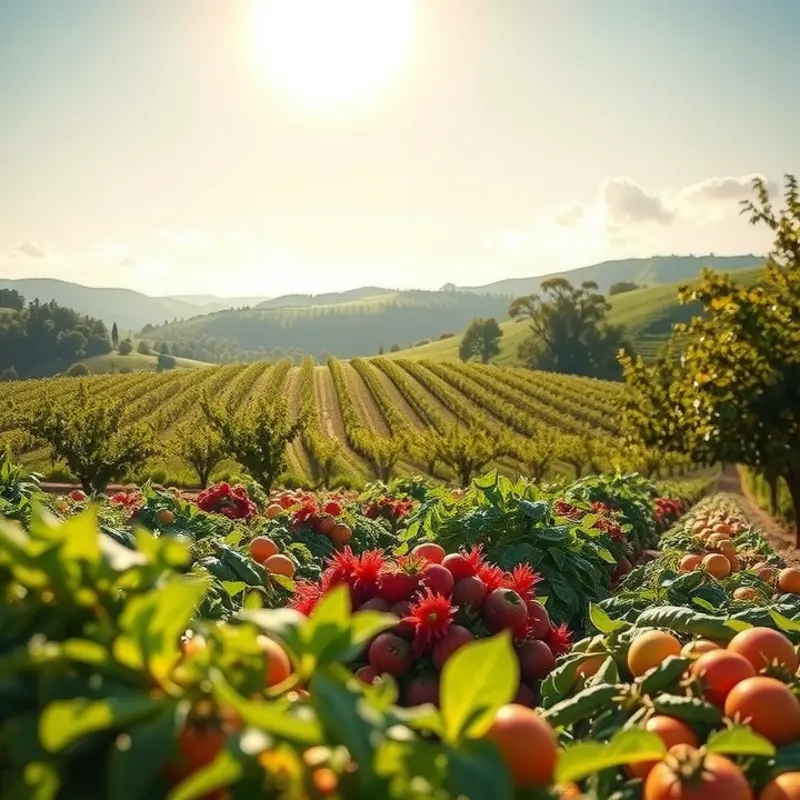Many people wonder if freezing food affects its nutrient content. With an ever-growing focus on nutrition, understanding how freezing impacts vitamins and minerals can help you make informed choices. This inquiry leads to common food myths that can be confusing. Are frozen fruits and vegetables less nutritious than their fresh counterparts? The reality is both nuanced and reassuring, offering insights into food storage practices that can enhance meal planning and health.
The Science of Freezing Food

Freezing food is a method that preserves its nutritional value efficiently, provided it’s done correctly. The primary benefit of freezing is slowing the activity of enzymes and bacteria that cause food spoilage. This extends the shelf life of food without sacrificing its original nutrients extensively. However, not all nutrients are unaffected; the composition of certain items can influence how freezing impacts their nutritional integrity.
Water-soluble vitamins like Vitamin C and the B-complex group are the most susceptible to degradation during freezing and thawing processes. This vulnerability often results from the leaching of vitamins into the water released by thawed food. Conversely, minerals, carbohydrates, proteins, fats, and fat-soluble vitamins like A, D, E, and K are relatively stable under these conditions.
Best practices for nutrient retention begin with the food’s preparation. Blanching vegetables before freezing can help preserve color, texture, and the vitamin content by deactivating enzymes and reducing microbial loads. However, blanching needs to be carefully timed, as over-blanching can lead to nutrient loss. Ideally, the process involves brief exposure to boiling water followed by rapid cooling in an ice bath.
Utilizing optimal temperature control in your freezer can further aid in nutrient preservation. Storing foods at a consistent temperature of 0°F (-18°C) or lower minimizes nutrient degradation. Slow temperature fluctuations or inconsistent freezing can lead to freezer burn, harming texture and nutritional value.
Packaging also plays a crucial role. Use airtight and moisture-resistant materials to avoid freezer burn and flavor loss. Vacuum sealing or using heavy-duty freezer bags removes most of the air, curtailing oxidation and nutrient breakdown.
Combining these best practices with mindful consumption can reduce food waste significantly, aligning with sustainable kitchen storage strategies. For more tips on maintaining an eco-friendly kitchen, visit the Eco-Smart Kitchen Storage Guide.
Ultimately, proper freezing is a dependable method to keep most nutrients intact. While some vitamin loss is inevitable, especially with improper handling, prioritizing efficient preparation and storage practices maximizes nutrient retention and food freshness.
Best Practices for Freezing Nutrients

When it comes to freezing foods without sacrificing valuable nutrients, the devil is in the details. Every step, from preparation to packaging, plays a crucial role in preserving vitamins and minerals.
Proper preparation is paramount. Start by selecting the freshest produce available. Fresh food retains more nutrients compared to items that are already on the brink of spoilage. Before freezing, wash and trim fruits and vegetables. Blanching, or briefly boiling vegetables, can halt the enzymes that lead to nutrient loss. After blanching, an immediate ice bath stops further cooking, preserving both texture and color.
Timing is also crucial when freezing food. Rapid freezing prevents the formation of large ice crystals, which can rupture cell walls and degrade nutrients. Consider setting the freezer to its coldest setting a few hours before introducing new items. Freshly harvested produce retains more vitamins if frozen as soon as possible—ideally within a few hours of picking.
Packaging is another essential aspect. Utilize airtight, moisture-resistant containers or freezer bags to minimize exposure to air and moisture. Both factors contribute to freezer burn and nutrient degradation. Remove as much air as possible from freezer bags before sealing, using the water displacement method if necessary. For added protection, consider double bagging particularly delicate items.
In addition to preserving nutrients, you can also enhance flavor retention. Freezing tends to dull the taste, so be generous with herbs and spices when preparing foods for the freezer. This way, when reheated, meals can boast robust flavors naturally and minimize the need for added seasonings later.
Labeling is an often-overlooked step that can make freezer management much smoother. Clearly write down the contents and freeze date. This practice prevents the mystery of forgotten meals and helps in rotating stock to ensure nothing gets left behind. Aim to consume frozen items within six months to maximize nutrient preservation.
For those interested in optimizing nutrient retention across all storage options, an eco-friendly approach can extend beyond freezing. An eco-smart kitchen storage guide can offer deeper insights into sustainable practices.
In summary, the keys to nutrient preservation when freezing are meticulous preparation, swift action, and careful storage. By paying attention to these details, you can enjoy the benefits of frozen foods without compromising their nutritional value.
Final words
Freezing food does not inherently destroy nutrients. In fact, when done correctly, it often preserves vitamins and minerals more effectively than other storage methods. The key is to freeze foods at their peak freshness and to use appropriate techniques to minimize nutrient loss. Understanding these practices enables you to maintain a healthy diet without sacrificing flavor or nutritional value. With the right approach, frozen foods can be just as beneficial as fresh produce, making them a valuable component of your nutrition strategy.








